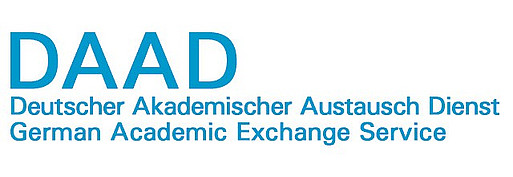Cell biology of human papillomaviruses (Florin Laboratory)

The Florin laboratory investigates human papillomavirus (HPV) entry, morphogenesis, and cellular defense mechanisms. HPV is a non-enveloped DNA tumor virus that infects skin and mucosa. The most oncogenic subtype, HPV16, causes various types of cancer, including cervical, anal, and head and neck cancers.
Die Arbeitsgruppe von Frau Prof. Florin untersucht das Eindringen von Tumorviren (onkogenen Papillomviren) in menschliche Zellen, sowie die Abwehrmechanismen der infizierten Zellen. Die Forschung der AG Florin befasst sich außerdem mit den Aufklärung eines generellen antiviralen und tumorsuppressiven Prozesses.
Die Arbeitsgruppe von Frau Prof. Florin untersucht das Eindringen von Tumorviren (onkogenen Papillomviren) in menschliche Zellen, sowie die Abwehrmechanismen der infizierten Zellen. Die Forschung der AG Florin befasst sich außerdem mit den Aufklärung eines generellen antiviralen und tumorsuppressiven Prozesses.
Members
Current Research and Publications
Our focus is to better understand how HPV enters cells. Our previous studies have revealed that HPV16 endocytosis occurs via tetraspanin-enriched microdomains through a novel clathrin- and caveolin-independent entry pathway. Specifically, (TIRF) microscopy of live cells, electron microscopy and infection analyses revealed that the tetraspanin CD151 mediates HPV endocytosis by interaction with laminin-binding integrins and integration of the papillomavirus-receptor complex into cell entry platforms. Our aim is to contribute to a more in depth understanding of the endocytic trafficking pathway that controls HPV entry and infection by building upon novel data that link tetraspanins and its adaptor proteins to HPV infection.Biophysical and functional analyses with the minor capsid protein L2 identified a direct interaction of the viral protein with cellular interaction partners such as cellular cytoskeletal proteins, transcription factors, and the small ubiquitin-like modifier (SUMO), which is indispensable for the delivery of viral DNA to nuclear structures and viral gene regulation. In addition, we recently showed the role of diverse host cell proteins during infection and their potential as new antiviral Targets.
Selected Publications
Mikuličić S, Shamun M, Massenberg A, Franke AL, Freitag K, Döring T, Strunk J, Tenzer S, Lang T, Florin L. ErbB2/HER2 receptor tyrosine kinase regulates human papillomavirus promoter activity. Front Immunol. 2024Schweiger L, Lelieveld-Fast LA, Mikuličić S, Strunk J, Freitag K, Tenzer S, Clement AM, Florin L. HPV16 Induces Formation of Virus-p62-PML Hybrid Bodies to Enable Infection. Viruses. 2022 Jul 5;14(7):1478. doi: 10.3390/v14071478.
Thölmann S, Seebach J, Otani T, Florin L, Schnittler H, Gerke V, Furuse M, Ebnet K. JAM-A interacts with α3β1 integrin and tetraspanins CD151 and CD9 to regulate collective cell migration of polarized epithelial cells. Cell Mol Life Sci. 2022 Jan 24;79(2):88. doi: 10.1007/s00018-022-04140-5.
Mikuličić S, Finke J, Boukhallouk F, Wüstenhagen E, Sons D, Homsi Y, Reiss K, Lang T, Florin L. ADAM17-dependent signaling is required for oncogenic human papillomavirus entry platform assembly. Elife. 2019; 8. pii:e44345. doi:10.7554/eLife.44345.
Guion L, Bienkowska-Haba M, DiGiuseppe S, Florin L, Sapp M. PML nuclear body-residing proteins sequentially associate with HPV genome after infectious nuclear delivery. PLoS Pathog. 2019; 15(2):e1007590. doi:10.1371/journal.ppat.1007590.
Wüstenhagen E, Boukhallouk F, Negwer I, Rajalingam K, Stubenrauch F, Florin L. The Myb-related protein MYPOP is a novel intrinsic host restriction factor of oncogenic human papillomaviruses. Oncogene. 2018; 37(48):6275-6284. doi:10.1038/s41388-018-0398-6.
Florin L, Lang T. Tetraspanin Assemblies in Virus Infection. Front Immunol. 2018; 9:1140. doi:10.3389/fimmu.2018.01140.
Gräßel L, Fast LA, Scheffer KD, Boukhallouk F, Spoden GA, Tenzer S, Boller K, Bago R, Rajesh S, Overduin M, Berditchevski F, Florin L. The CD63-Syntenin-1 Complex Controls Post-Endocytic Trafficking of Oncogenic Human Papillomaviruses. Sci Rep. 2016; 6:32337.
Bund T, Spoden GA, Koynov K, Hellmann N, Boukhallouk F, Arnold P, Hinderberger D, Florin L. An L2 SUMO interacting motif is important for PML localization and infection of human papillomavirus type 16. Cellular Microbiology. 2014; 16(8):1179-1200.
Scheffer KD, Gawlitza A, Spoden GA, Zhang XA, Lambert C, Berditchevski F, Florin L. Tetraspanin CD151 Mediates Papillomavirus Type 16 Endocytosis. J Virol. 2013; 87(6):3435-3446.
Spoden G, Freitag K, Husmann M, Boller K, Sapp M, Lambert C, Florin L. Clathrin- and Caveolin-independent entry of human papillomavirus Type 16 – Involvement of tetraspanin-enriched microdomains (TEMs). PLoS ONE. 2008; 3(10):e3313.
For more publications see here
Funding








